How to set yourself up for a successful game localization project
Getting ready to localize your game? Learn what to consider before starting a localization project, from setting up your file to creating a style guide.
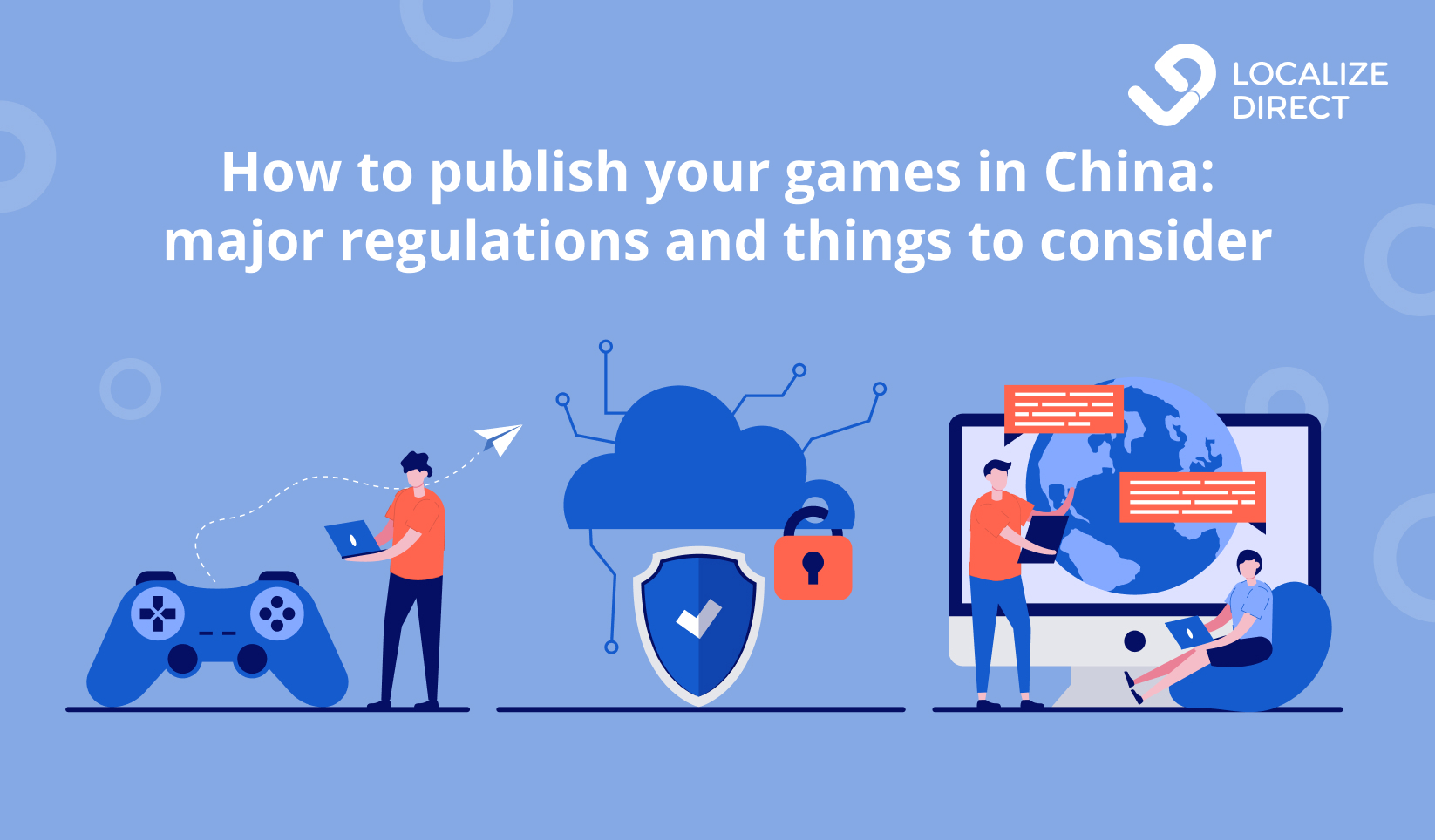
The Chinese market is one of the most popular choices when it comes to expanding the global reach of a game. It is indeed a potentially fruitful market, although it comes with some very specific regulations.
What do you need to know before localizing your game to Chinese and promoting it to the local audience? In this post, we’ll cover all the requirements you’ll have to fulfill to enter the Chinese gaming market.
WHAT’S COVERED:
China offers one of the largest gaming audiences in the world. As predicted, it is gradually overtaking the US as the biggest consumer market and showing great potential for game publishers. Here are some major facts about the Chinese gaming ecosystem that confirm its growth do global dominance:
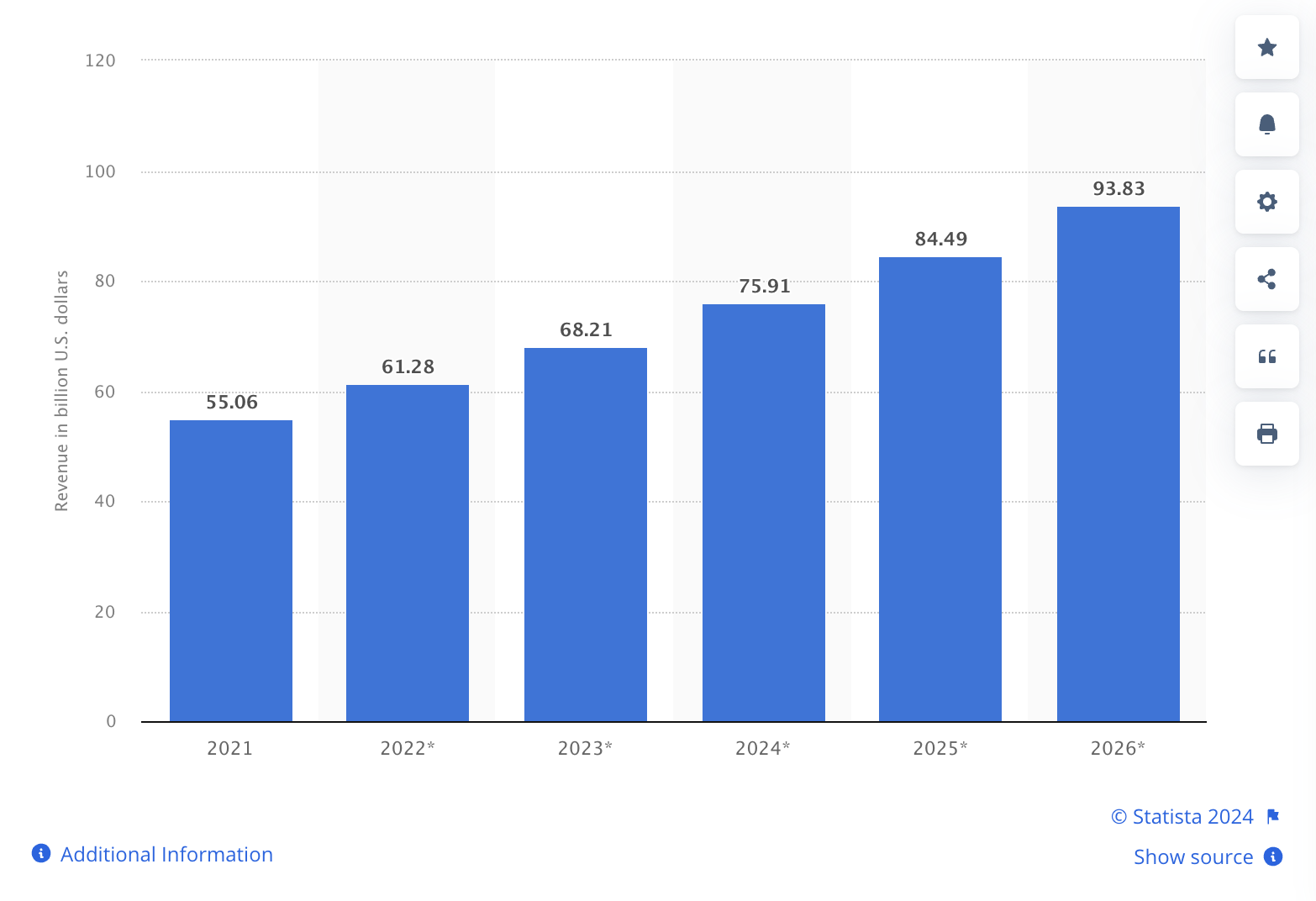
Video game revenue in China in 2021 with forecasts until 2026 (in billion U.S. dollars). Source
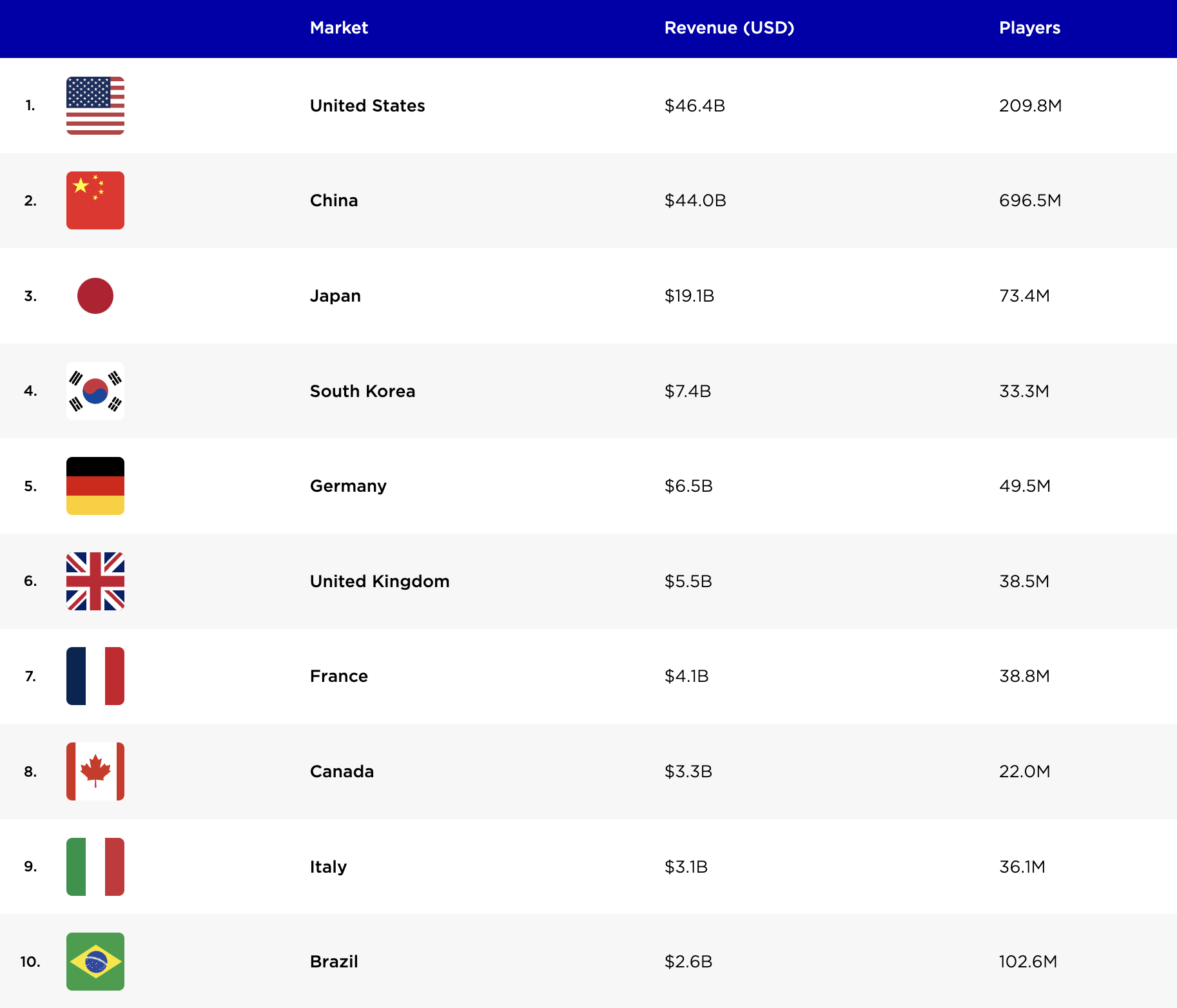
The biggest gaming markets by revenue and number of players in 2022. Source
While it seems clear that it’s a potentially profitable market for game publishers, entering it poses a couple of regulatory challenges. It’s crucial to learn about the rules beforehand so that you can plan the release of your game.
The regulatory landscape is quite complicated in China, and there are three major areas to consider: having a local business entity authorized to publish games, obtaining all the necessary licenses, and undergoing a scrupulous review process by local authorities. Let’s take a closer look at these requirements.
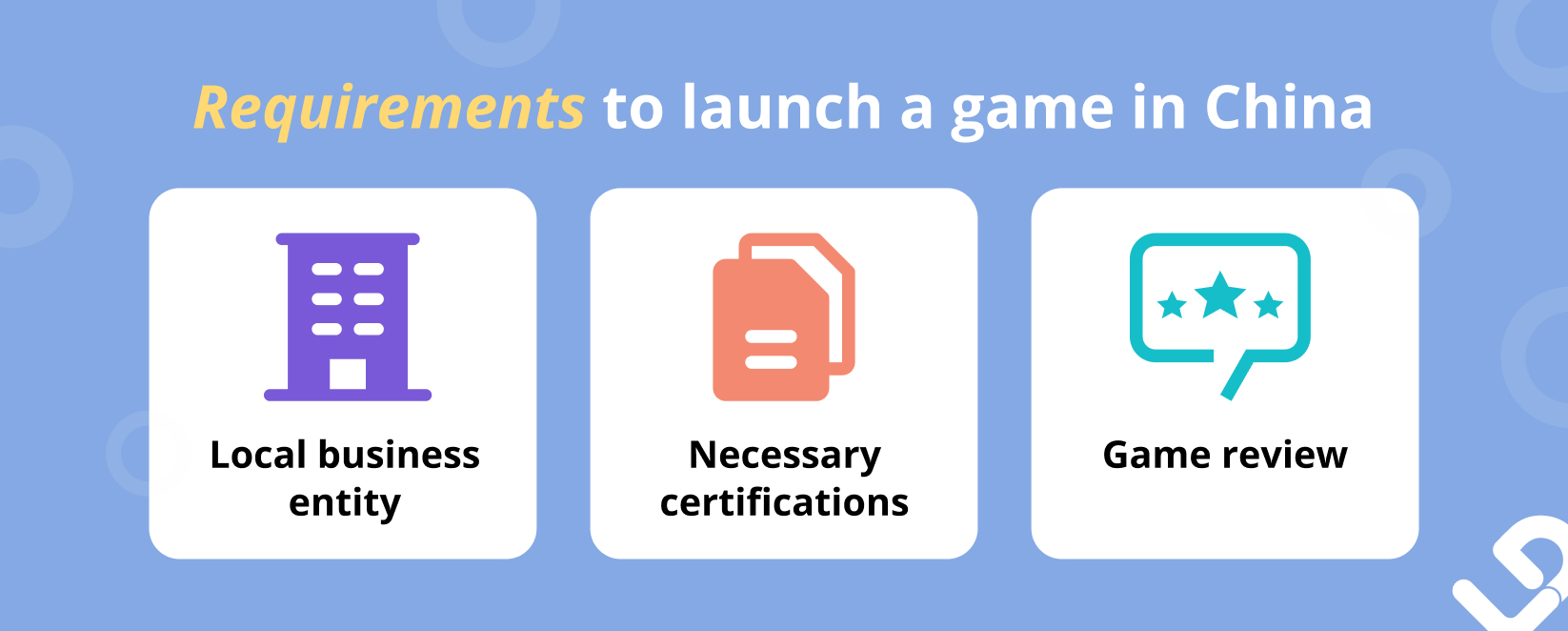
First and foremost, there’s no legal way to publish a PC or mobile game in China if you don’t have a local business entity. The solution is to partner with a Chinese company that will publish the game on your behalf.
Your Chinese publishing partner might take a significant portion of the profit, but it can also help you reach more players by handling marketing activities and distribution.
There are some workarounds that apply to some types of games:
There are a number of licenses you’ll need to obtain to publish your game:
The first thing to comply with is the National Copyright Administration of China (NCAC). You’ll need to prepare a document with all the major information about your game: a brief overview, proof of originality, samples of artwork and design, technical information, etc. Once it’s written and translated to Chinese, you need to submit it to the Chinese authority—at its Beijing headquarters or online. The copyright administration will then issue you the Game Software Copyright Certificate (GSCC).
This step can only be completed with the help of a local company you’ve partnered with. The Chinese-based company will apply for the Internet Content Provider (ICP) certificate through the Chinese Ministry of Industry and Information Technology. The issued ICP certificate allows a company to sell your game to Chinese players on websites that operate on servers located in China.
There are plenty of Chinese gaming companies that already have an ICP certificate and are authorized to sell games to Chinese players, so it makes sense to partner with one of them to save time.
Note: according to recent updates to regulation, mobile apps also must obtain an ICP Filing Number in order to be published.
As in the case of the ICP certificate, an Internet Publishing License (IPL) can be granted to local companies only. This license is needed for further steps that involve obtaining the game’s ISBN. If you partner with a large Chinese company to publish your game, it likely has an IPL and will apply for the ISBN on your behalf.
Note: if you’re releasing a mobile gaming app, you might not be required to have the ICP certificate (if you don’t have a supporting website to promote the game, for example). Consult with your local partner to straighten this out.
Any digital publication is required to have a unique International Standard Book Number (ISBN). This 13-digit identifier is issued by China’s National Press and Publication Administration (NPPA) after the game passes content approval.
Getting an ISBN normally takes up to 12 months. Sometimes, the process might last even for a few years. However, recent years have shown a more positive dynamic in accepting foreign games, so you might expect to fulfill the requirements faster.
The ISBN issued for your game is forever tied to your publisher. However, this doesn’t mean that you can’t work with and switch other companies to distribute and publish your game in different stores.
The National Press and Publication Administration has been responsible for regulating all media and digital publications since 2018. This authority will play a major role in your game’s release on the Chinese market, as it decides if a product complies with the local laws and addresses the local culture.
To submit your game to NPPA, you’ll need to provide a lot of materials related to the game’s content and compliance with local rules:
Officially, approval time should be up to 80 days from the day of submission. However, foreign games are usually reviewed within the span of 6-8 months or even longer. There can be multiple rounds of feedback and re-review, which means that you’ll be asked to implement some changes to your game and submit it again.
Once the game is approved, you can breathe a sigh of relief—the most arduous and unpredictable process is over!
Now that it’s clear what steps await you on the path to the Chinese market, let’s discuss the details of the review process and the major things that might prevent your game from being approved.
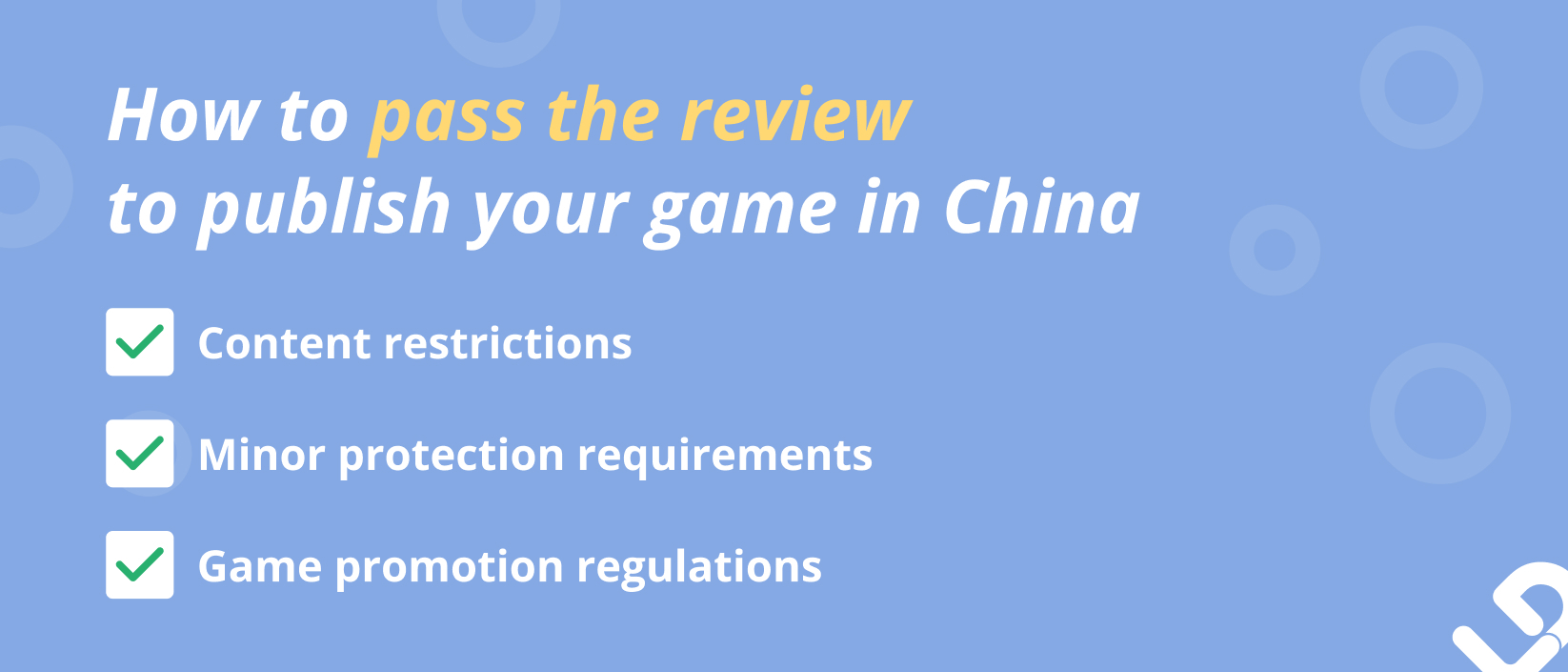
As we’ve mentioned, the defining step is the review done by NPPA. Before submitting an application, you have to prepare your game in accordance with Chinese laws and cultural sensibilities. Besides high-quality Chinese localization, sometimes, you might need to completely rethink parts of your game.
The NPPA assesses your game against 5 categories, rating the product from 0 to 5 points in each. These categories are value orientation, original design, production quality, cultural content, and development stage. If you get 0 points in any of the categories or a total of 2 or fewer, the game won’t be authorized. The more points a game gets, the more likely it will get approved.
Naturally, the authority is more welcoming to the games that are properly adapted to the local context and that are original. Games that copy the storyline of elements of gameplay from other products might get rejected. But the most stringent rules apply to the game’s content that might include censored topics or inappropriate elements.
Note: you can’t re-submit the same game for review an endless number of times. Typically, if a game is rejected for a second or third time, it unfortunately means that your path to the Chinese market with this particular title is permanently closed.
Let’s discover the major technical and content aspects you should pay attention to when preparing a game for the Chinese market.
There are several specific rules for gaming content that prohibit the following:
For instance, the UGC-based game Animal Crossing got banned in China because players started generating political messages in the game:
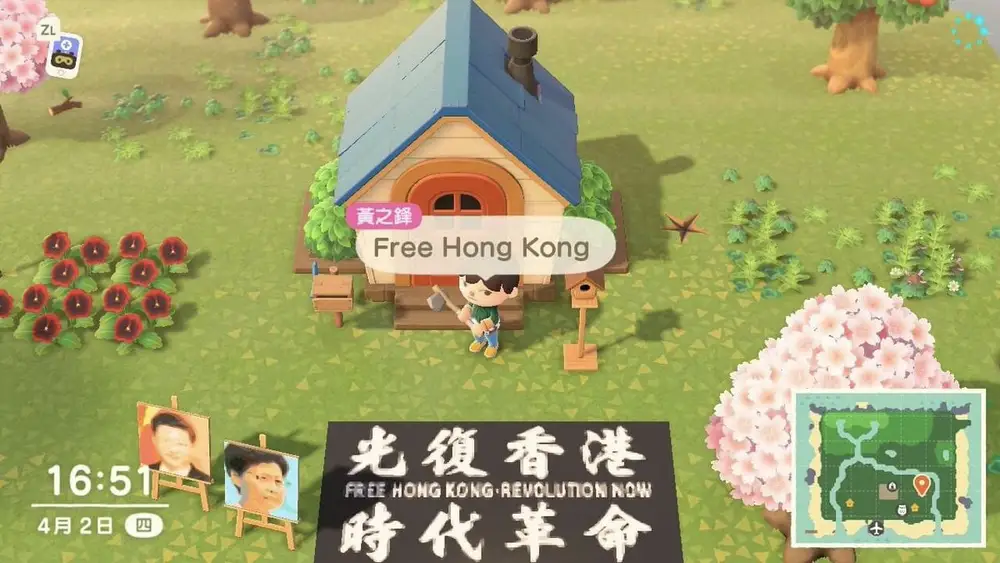
Political message generated by a user in the Animal Crossing game. Source
For instance, the Honor of Kings game had to redesign a character whose reckless motorcycle riding raised concerns among Chinese parents—the version of a character without a helmet and with only one hand on the handlebar was changed to a “safer” version:

The “unsafe” and “safe” version the Honor of Kings game. Source.
Redesign of the Honor of Kings character
For instance, the PUBG game had to completely change the setting to be published in China so that it doesn’t feature a battlefield. Blood from the shooting was changed to light effects:
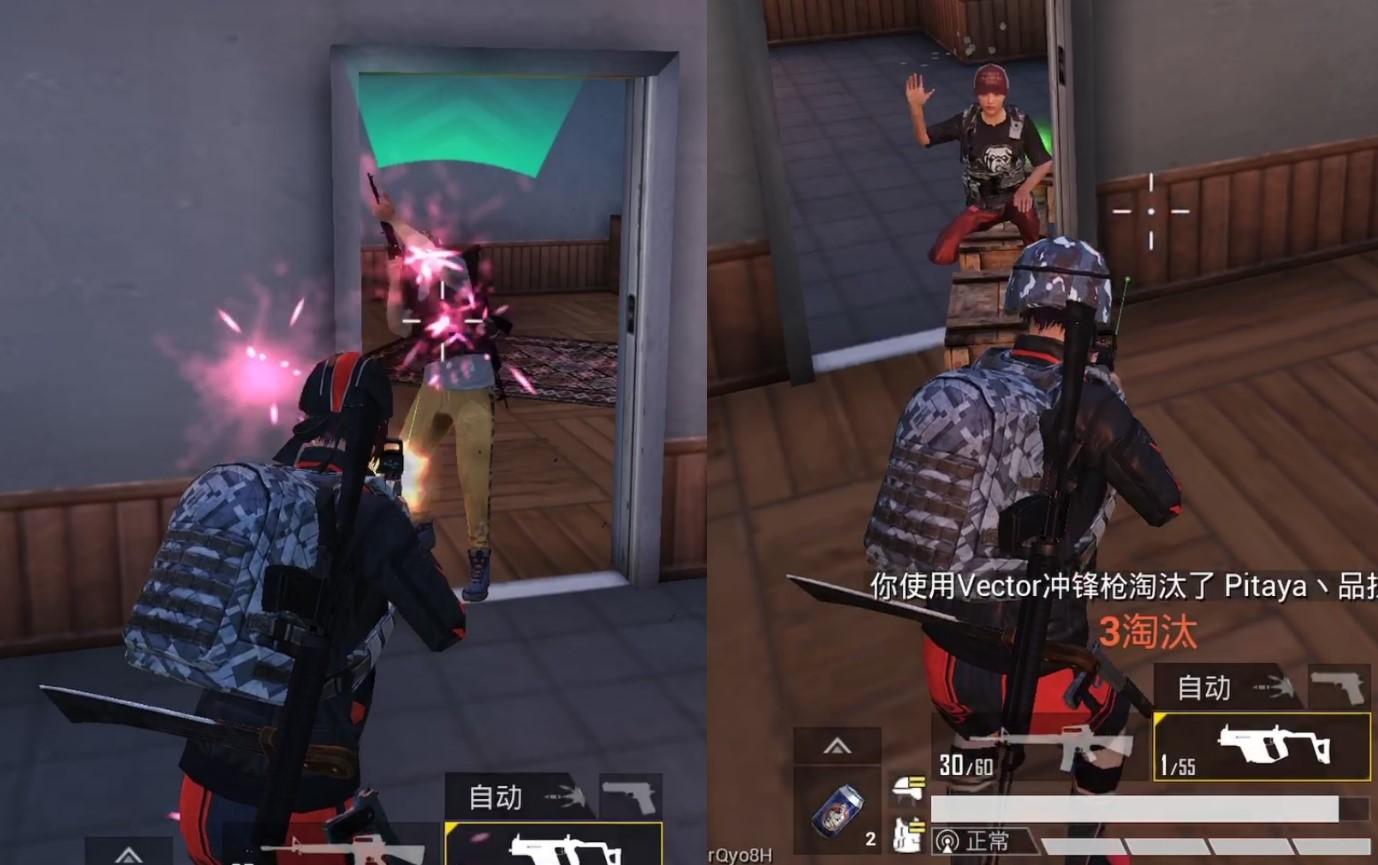
Chinese version of PUBG. Source
The review process is subjective in interpreting the above mentioned topics so we highly recommend cooperating with experienced local publishers that know what can be accepted and what should definitely be adjusted.
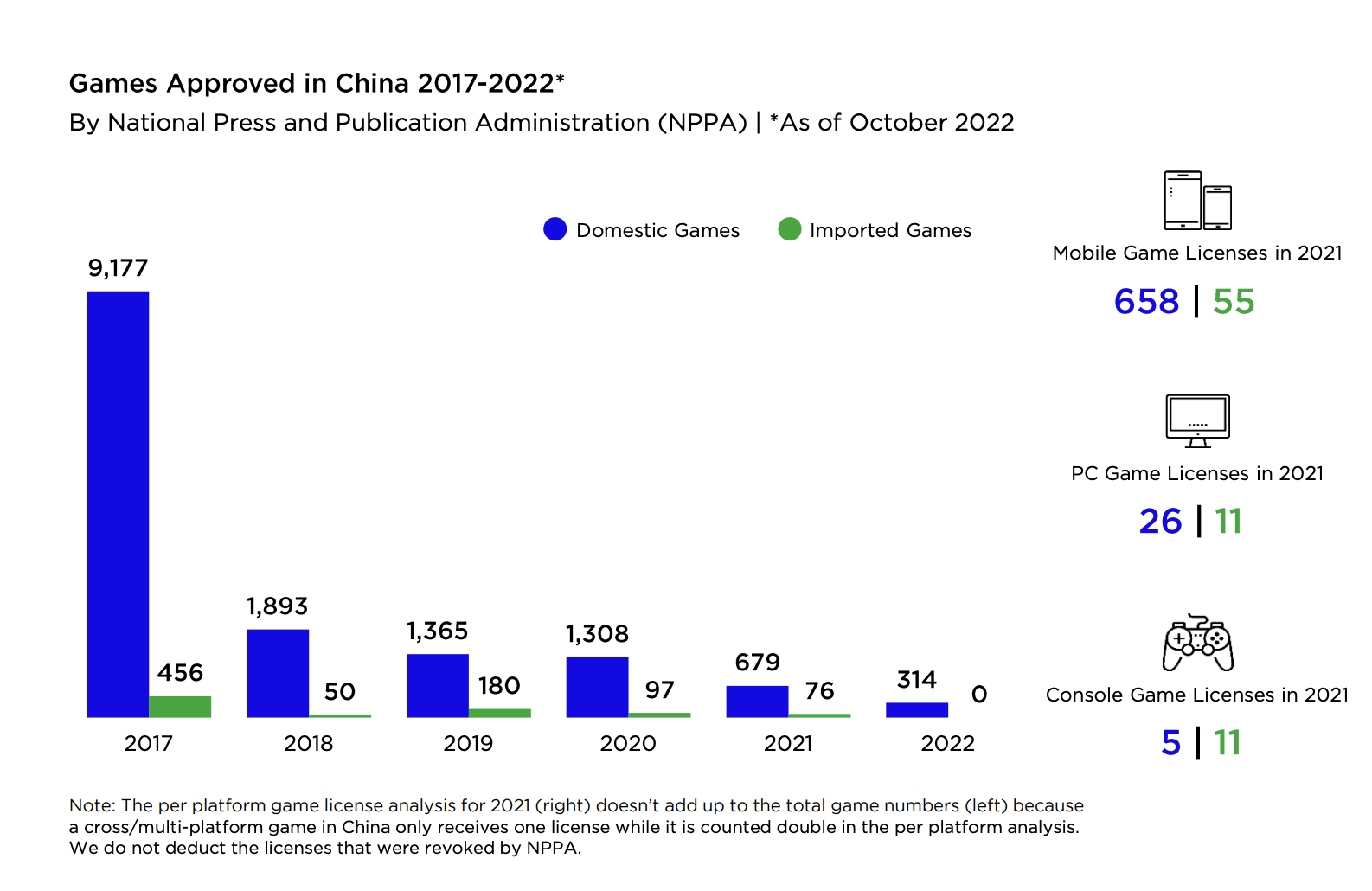
The number of approved games over the recent years. Source: Newzoo & NPPA
The Chinese government adopted a strict anti-addiction regulation that applies to children and teenagers under 18. Since 2019, minors were only allowed to play 1.5 hours during a weekday and up to 3 hours on a holiday, but in 2021, the regulation became even harsher.
Now, players under 18 are allowed to access games only between 8 PM and 9 PM on Fridays, Saturdays, Sundays, and holidays (yes, it’s only an hour max and only on certain days). On top of that, there are limitations on in-game spending for minors. The monthly maximum is ¥200 for players aged 8-16 and ¥400 for players aged 16-18.
While parents and guardians are responsible for how minors under 18 consume digital products, it’s also the responsibility of game developers to ensure that these restrictions are technically controlled.
It might seem that once you get approved by the NPPA, the regulatory work is done. However, for the comprehensive promotion of your game on the Chinese market, you’ll also need to obtain the approval of the National Radio and Television Administration (NRTA).
This step is required for marketing your game through videos that will be shared on various digital platforms in China. It certainly makes sense to create and share promotional videos—as well as partnering with local marketing agencies and stars to do so, which means you’ll need to undergo another review process. Luckily, NRTA’s requirements are practically the same as NPPA’s, so there shouldn’t be any compliance issues if your game is already approved for an ISBN.
As you can see, you might need to adjust the content of your game so that it fits the Chinese culture and complies with regulations. You’re also required to partner with a local company to publish the game and enable anti-addiction measures.
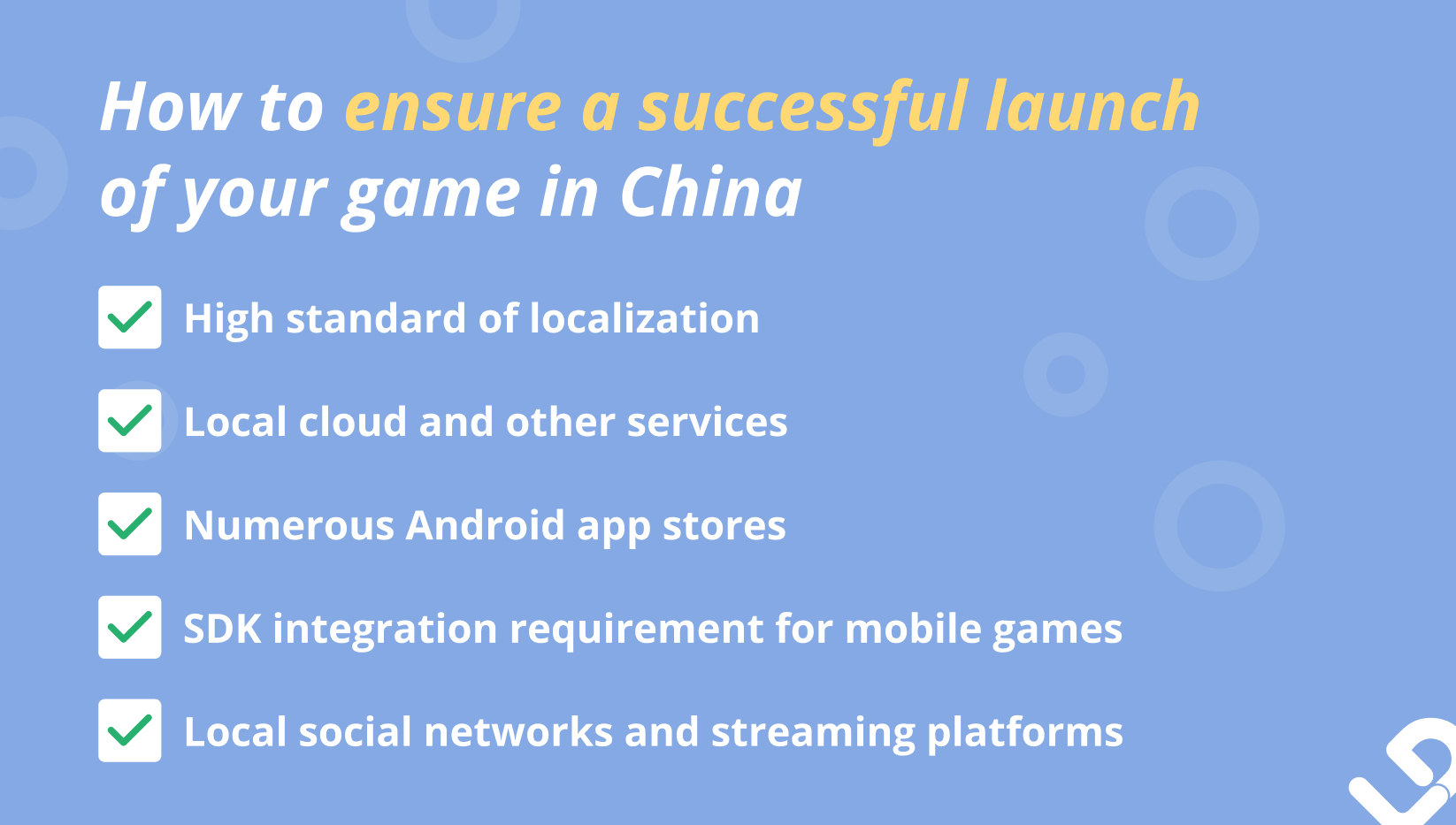
Here are some other important things to consider:
Even though it’s quite hard for foreign developers to publish their games on the Chinese market, the changes incorporated in 2022-2023 demonstrate the tendency to soften the requirements. It’s expected that China will decentralize the approval processes, and games will be able to get licensed through Free Trade Zones.
With all things considered, the Chinese market still represents a chance to embrace the largest gaming audience in the world, so your game might greatly benefit from Chinese localization. If you have doubts about the regulations and publication process, find a local company that has already tested the waters and knows how to undergo close scrutiny by Chinese authorities and promote your game in a way that is most attractive to local players.
Looking for experts in Chinese localization? Drop us a line, and we’ll help you start preparing your game for conquering China.
Getting ready to localize your game? Learn what to consider before starting a localization project, from setting up your file to creating a style guide.
Some Asian countries are absolute global leaders in the gaming industry: for instance, China, Japan, and South Korea are all in the top 4 by revenue after the US. Other markets (Southeast Asia and the Middle East) are some of the most rapidly growing ones, especially in the sector of mobile gaming.
